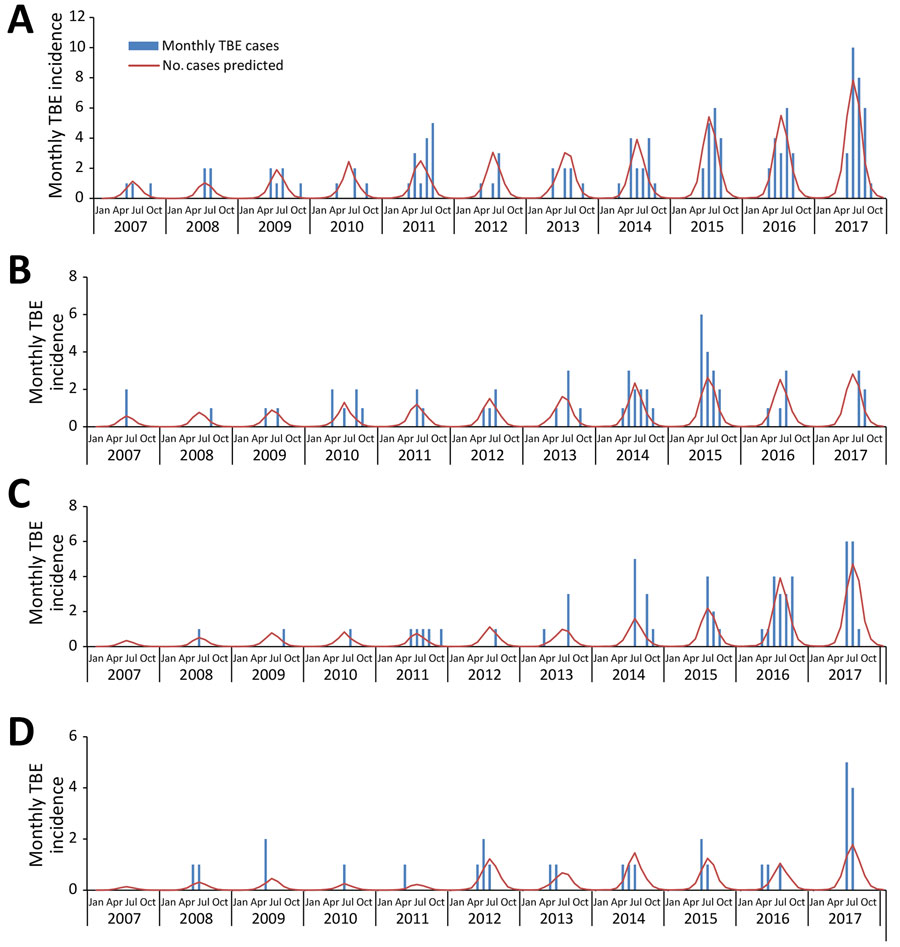Volume 26, Number 12—December 2020
Research
Game Animal Density, Climate, and Tick-Borne Encephalitis in Finland, 2007–2017
Figure 2

Figure 2. Actual and predicted number of TBE cases in 4 game management areas, Finland, 2007–2017. A) Varsinais-Suomi; B) Kaakkois-Suomi; C) Uusimaa; and D) Lappi. Number of tick-borne encephalitis cases is predicted by a mixed effects multivariable negative binomial model including number of moose, roe deer, white-tailed deer, mountain hare, and red fox killed by hunters adjusted for a 12-month periodicity, minimum temperature, and month, with a random effect on game management areas. TBE, tick-borne encephalitis
Page created: September 18, 2020
Page updated: November 19, 2020
Page reviewed: November 19, 2020
The conclusions, findings, and opinions expressed by authors contributing to this journal do not necessarily reflect the official position of the U.S. Department of Health and Human Services, the Public Health Service, the Centers for Disease Control and Prevention, or the authors' affiliated institutions. Use of trade names is for identification only and does not imply endorsement by any of the groups named above.